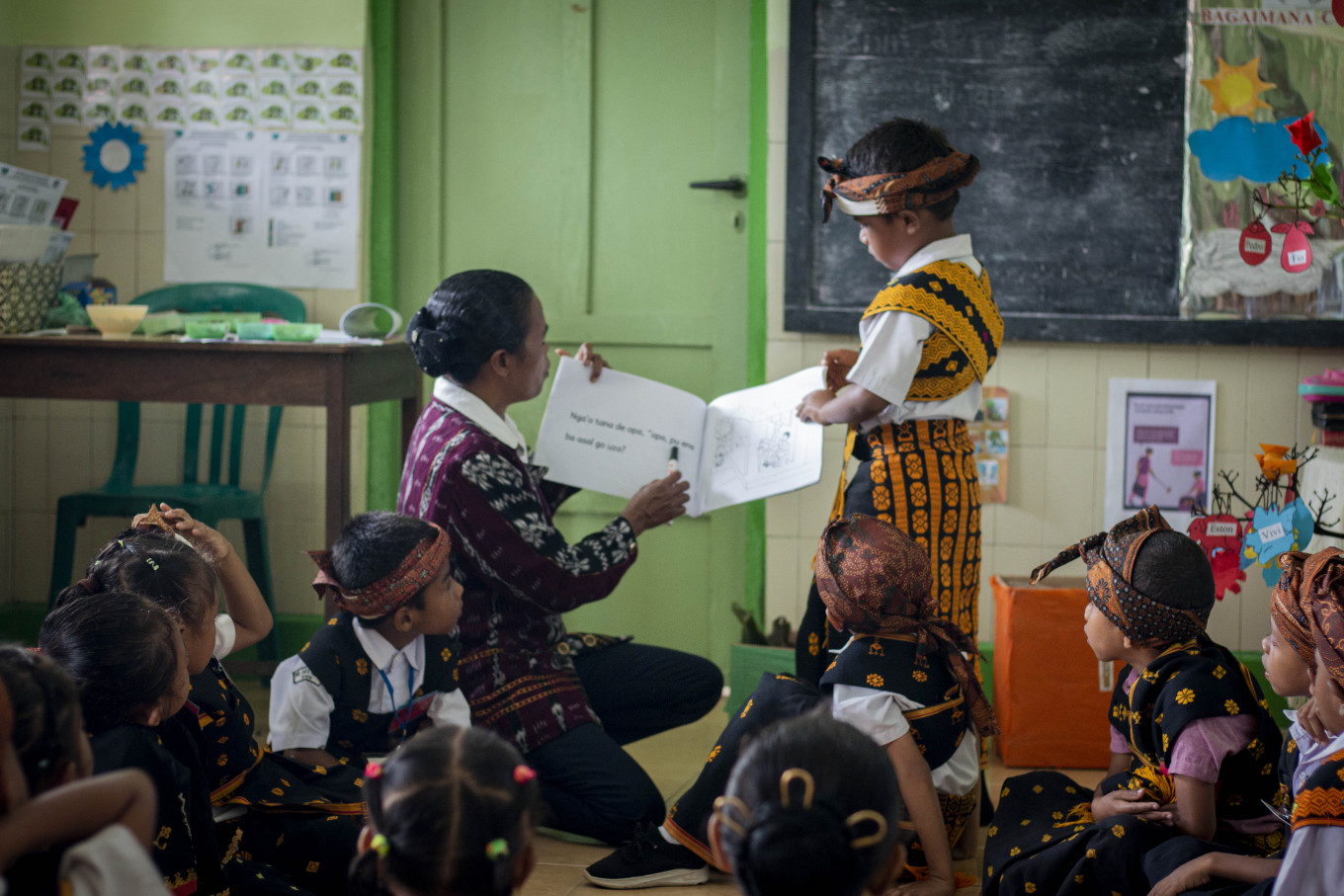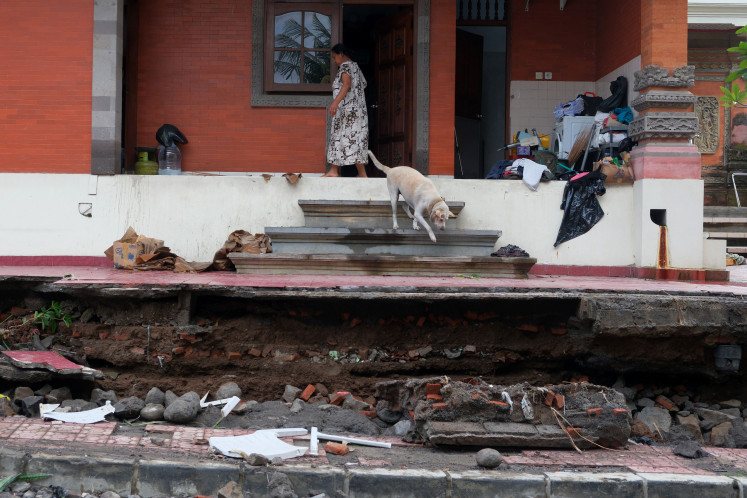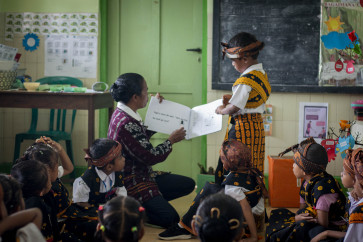Popular Reads
Top Results
Can't find what you're looking for?
View all search resultsPopular Reads
Top Results
Can't find what you're looking for?
View all search resultsTeachers turn to their mother tongue to bridge language divide
Teachers are using local languages at schools in the remote and outlying regions of Indonesia to give their pupils a more considerate learning experience.
Change text size
Gift Premium Articles
to Anyone
D
eep into the winding roads that cut through East Nusa Tenggara’s rocky terrain, 52-year-old teacher Maria Nena, who teaches at a preschool in Nagekeo regency, opened her morning class by greeting her students in the regency’s native language of Nage.
She then began to display hand-drawn pictures of animals and everyday objects in front of the class, as her students eagerly shouted descriptive words of the picture back to her in both Indonesian and Nage.
In a country that has managed to keep its more than 700 unique regional languages alive, this cultural diversity has also posed its own set of problems in education. Some students, particularly those that prefer their native language in day-to-day life, find the transition to schooling in the Indonesian language to be difficult.
“Most of these kids predominantly use the [Nage language]. If I start my lessons in Indonesian, they would not understand it straight away,” Maria told The Jakarta Post on Thursday. “That’s why, for the first semester [of an academic year], I mostly deliver my lessons in Nage, and Indonesian in the second semester.”
Despite her extensive 28-year teaching experience, her intermittent use of both languages was relatively new, she said, and had borne immediate results.
“The response from the students has been great. They show greater camaraderie among themselves and they can connect better with me,” she added.
Fifty-two-year-old Maria “Sinta” Yasinta, who teaches at a state elementary school in the regency, also noted similar improvements among her students after she started using both Nage and Indonesian in her classes.



















